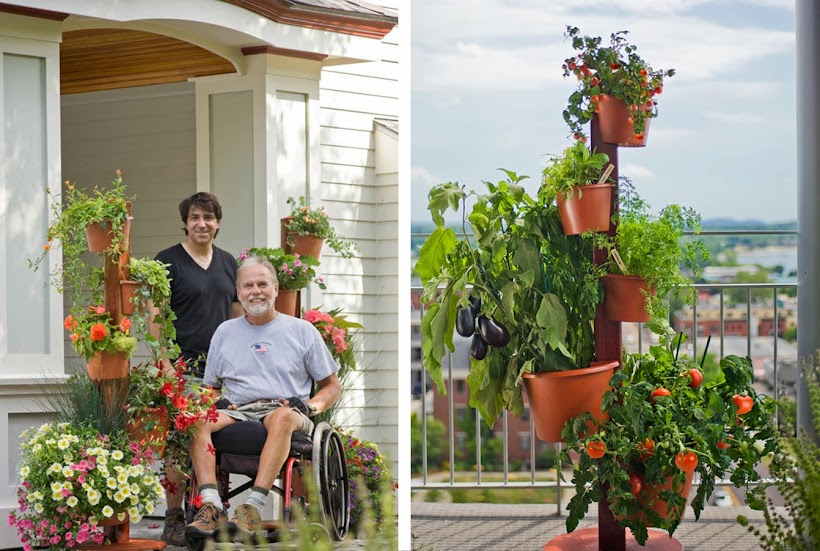My Garden Post costs most
folks $199.99 or more. As gardening systems go, it’s about mid-range, but still
an investment that can’t be made without reasonable due diligence. Gardeners
are a practical lot and want to get full value out of every dollar.
The purpose of this post
is to help you with your diligence. While some may be content with 3 or 4
months of vegetable gardening, I’m posting weekly suggestions on ways to keep a
My Garden Post in use and productive 12 months a year. I’ve already shared my
experience with growing herbs inside and the enjoyment of cooking with fresh
herbs all winter long. Today I have pictures of three ways to use your MGP and
individual planters after the vegetable gardening season has passed.
This arrangement of
ferns, pothos and ivy grow very well indoors. The wealth of light from the
glass door is actually more than the plants need, but they loved it. My Garden
Post is an attractive addition to the décor of gardener’s homes.
With my vegetables all
harvested, I converted two My Garden Posts to fall themes. This handsome
planting of mums, kale, cabbage and grasses looked terrific for 2 months.
These MGP planters grew a
lush display of annuals all summer. For the holidays, they make a beautiful
addition to the other Christmas decorations about the house. The innovative
planter design and secure mounting bracket allow you to garden vertically
anywhere you have a 4” X 4” post.
Thank you for following
and Happy Thanksgiving,
Oliver













